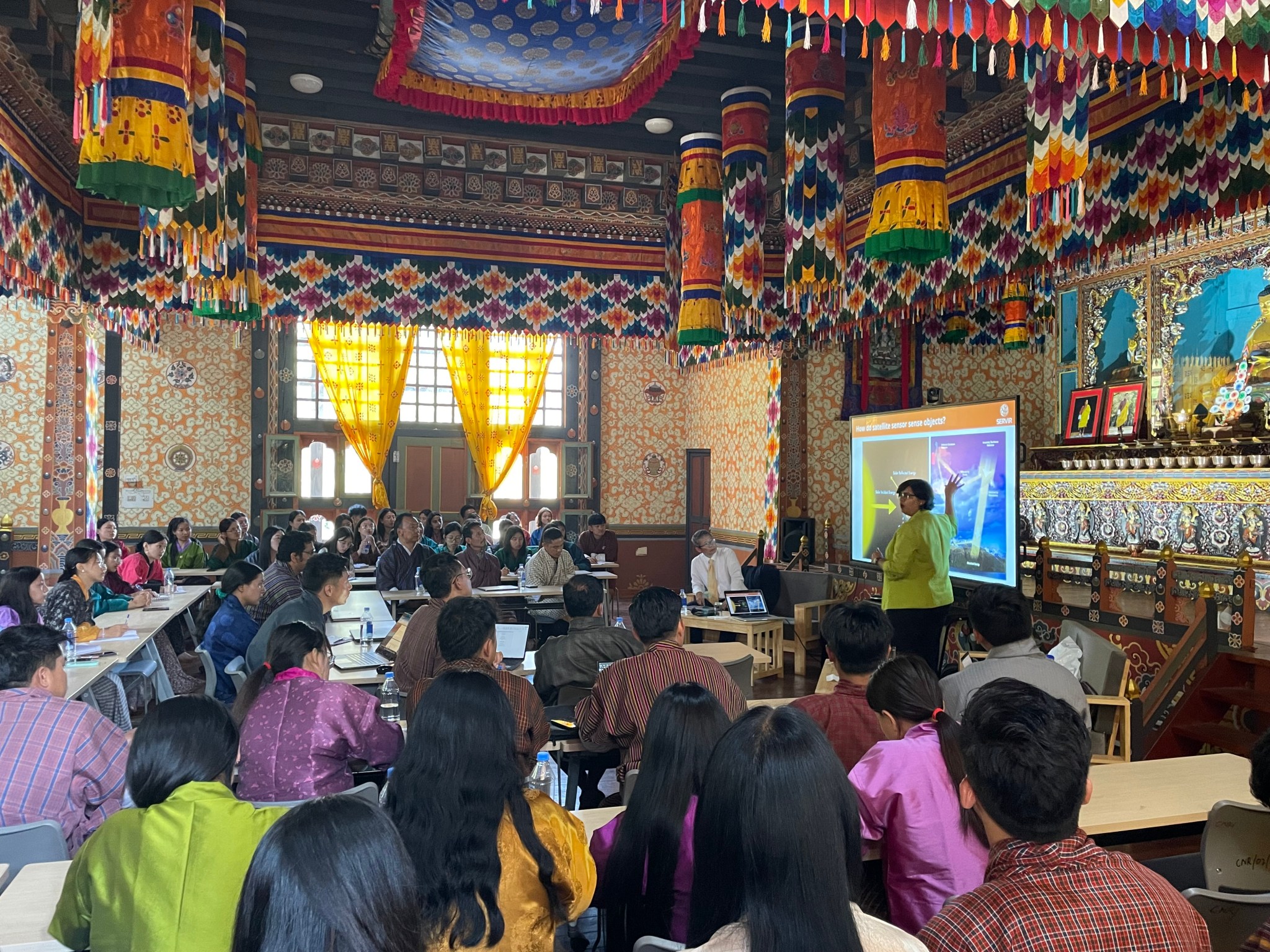5 min read

NASA and the Kingdom of Bhutan have been actively learning from each other and growing together since 2019. The seeds planted over those years have ripened into improved environmental conservation, community-based natural resource management, and new remote sensing tools.
Known for its governing philosophy of "gross national happiness," [Bhutan] has a constitutional mandate to maintain at least 60% forest cover. The government's goals include achieving nationwide food security by 2030.
Bhutan first approached the U.S. State Department to partner on science, technology, engineering, and mathematics (STEM) opportunities for the country, and NASA was invited to help lead these opportunities. In 2019, Bhutan's King Jigme Khesar Namgyel Wangchuck visited NASA's Ames Research Center in Silicon Valley, California, and was introduced to several NASA programs.
NASA's Earth scientists and research staff from several complementary programs have helped support Bhutan's goals by providing data resources and training to make satellite data more useful to communities and decision makers. Bhutan now uses NASA satellite data in its national land management decisions and plans to foster more geospatial jobs to help address environmental issues.
Supporting Bhutan's Environmental Decision Makers
Bhutan's National Land Commission offers tax breaks to farmers to support food security and economic resilience. However, finding and reaching eligible farmers on the ground can be expensive and time consuming, which means small farmers in remote areas can be missed.
A team from SERVIR - a joint NASA-U.S. Agency for International Development initiative - worked with Bhutanese experts to create decision-making tools like the Farm Action Toolkit (FAcT). The tool uses imagery from the NASA-U.S. Geological Survey Landsat satellites to identify and measure the country's farmland. SERVIR researchers met with agricultural organizations - including Bhutan's Ministry of Agriculture and Livestock, National Statistics Bureau, and National Center for Organic Agriculture - to adjust the tool for the country's unique geography and farming practices. The Land Commission now uses FAcT to identify small farms and bring support to more of the country.
NASA also develops local capacity to use Earth data through efforts like the Applied Remote Sensing Training Program (ARSET). In early 2024, ARSET staff worked with SERVIR and Druk Holdings and Investments (DHI) to host a workshop with 46 Bhutanese government personnel. Using tailored local case studies, the teams worked to find ways to better manage natural resources, assist land use planning, and monitor disasters.
"We look forward to continuing this collaboration, as there are still many areas where NASA's expertise can significantly impact Bhutan's development goals," said Manish Rai, an analyst with DHI who helped coordinate the workshop. "This collaboration is a two-way street. While Bhutan has benefited greatly from NASA's support, we believe there are also unique insights and experiences that Bhutan can share with NASA, particularly in areas like environmental conservation and community-based natural resource management."

Encouraging Bhutan's Future Environmental Leaders
By working with students and educators from primary schools to the university level, Bhutan and NASA have been investing in the country's future environmental leadership. Supporting educators and "training trainers" have been pillars of this collaboration.
NASA and Bhutan have worked together to boost the skills of early-career Earth scientists. For example, NASA's DEVELOP program for undergraduates worked directly with local institutions to create several applied science internships for Bhutanese students studying in the U.S.
Tenzin Wangmo, a high school biology teacher in Bhutan, participated in DEVELOP projects focusing on agriculture and water resources. According to Wangmo, the lessons learned from those projects have been helpful in connecting with her students about STEM opportunities and environmental issues. "Most people only think of NASA as going to space, rather than Earth science," she said. "It was encouraging to my students that there are lots of opportunities for you if you try."
NASA is also supporting Bhutan's future environmental leadership through the GLOBE (Global Learning and Observations to Benefit the Environment) Program. The GLOBE program is a U.S. interagency outreach program that works with teachers to support STEM literacy through hands-on environmental learning. Since 2020, GLOBE has worked through the U.S. State Department and organizations like the Ugyen Wangchuck Institute for Forest Research and Training to support educators at two dozen schools in Bhutan. The program reached more than 650 students with activities like estimating their school's carbon footprint.
This focus on STEM education enables students and professionals to contribute to Bhutan's specific development goals now and in the future.
Sonam Tshering, a student who completed two DEVELOP projects on Bhutanese agriculture while studying at the University of Texas at El Paso, was able to share the value of these efforts at the 2023 United Nations Climate Conference. "By applying satellite data from NASA, we aimed to create actionable insights for our local farmers and our policymakers back in Bhutan," she said.
By Jacob Ramthun and Lena Pranksy, SERVIR Communications Team, and Jonathan O'Brien, ARSET Communications Team






